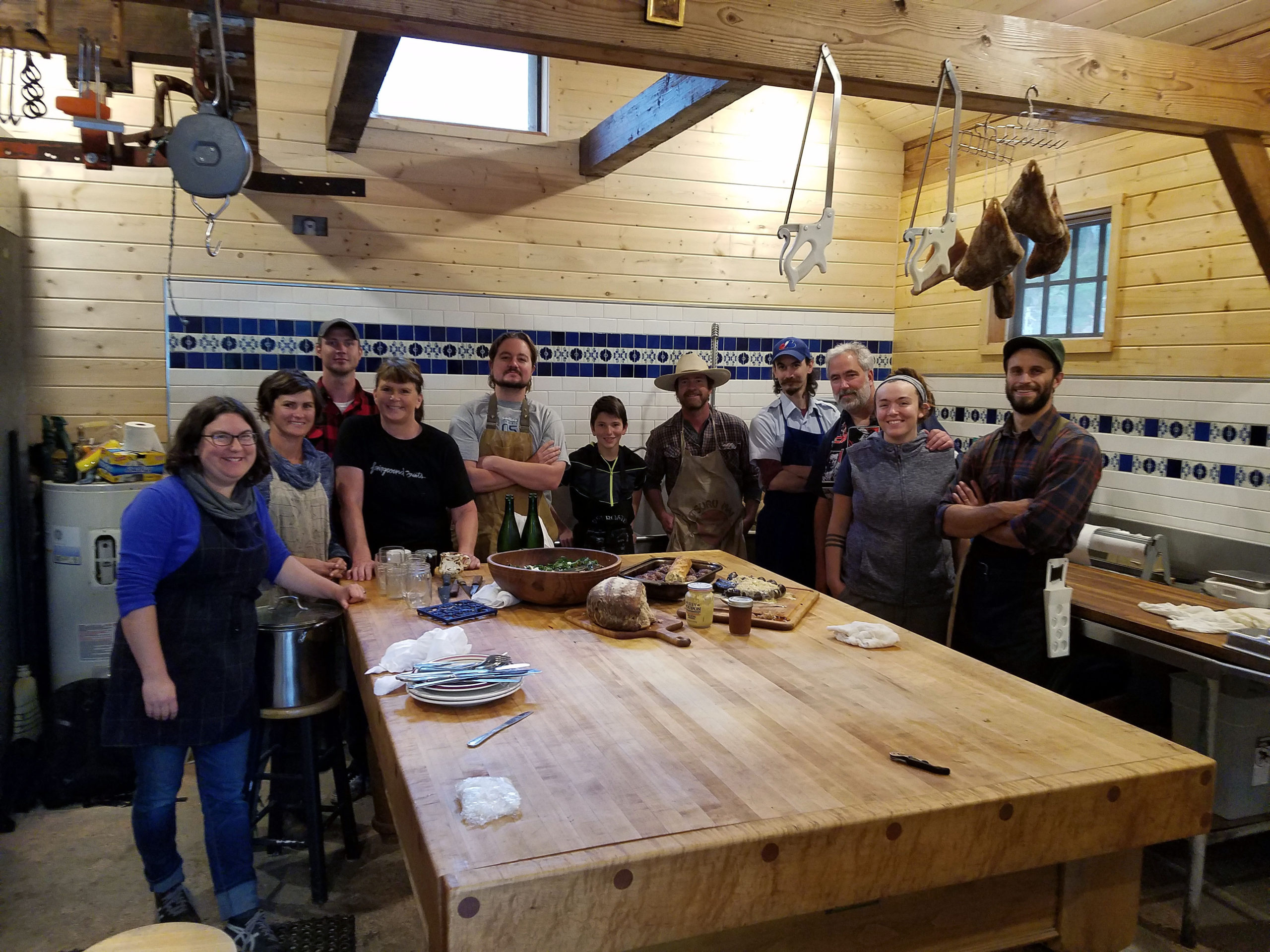Growing up on a small farm, I always wanted a homestead where I could raise and harvest animals. As a boy growing up, I watched and learned from my father.
I heard countless tales of his experiences working with his dad slaughtering and butchering pigs during his childhood in western Kentucky. From cooking fresh cracklins in a cast iron pot on harvest day to the taste of cured country hams aged in smoke barns, these tales ignited my desires to learn traditional hog processing methods.
Now, I am raising and caring for heritage pigs in my own backyard. I’ve butchered numerous chickens, squirrels and wild turkey to larger animals, including deer, wild pigs and even black bear, but I am not a butcher. And, while I may have aspired to be a butcher in a different life, as I love processing wild game, this is the first time Beane Farm has had domestic swine that will eventually be transitioned from farm to table.
A year ago, I purchased a pair of Berkshire piglets with a plan to raise a breeding pair that would produce litters of piglets. This way, I could raise my own heritage pigs and be solely responsible for their diet, health and vitality. I always create a close bond with the animals I raise and, while harvesting them is not at all easy, I’m at peace knowing the animal’s life was good and that it provides nourishment to mine. This is the circle of life we all must embrace, and this strategy removes the industrial treatment that commercial livestock must endure. I prefer to care for the animal I eat from start to finish.
Traditional methods of hog butchering, unlike any method I’ve used before, retain the skin and fat of the hog, both increasing the savor and overall quality of meat. I truly see the value of using the whole animal — especially one I’ve raised and affectionately cared for since weanling size.
I purchased several how-to books on traditional hog butchering and, through Internet research, soon discovered an opportunity of a lifetime where I could experience hands-on training for all aspects of hog butchering. I stumbled upon a class called ‘The Family Pig,’ offered by Farmstead Meatsmith, a personal slaughterhouse, butchery and charcuterie service for small homesteads and farms in the Puget Sound region of the Pacific Northwest. I contacted the owners, Brandon and Lauren Sheard, and learned they had expanded their butchering knowledge into a unique business of teaching others how to do everything related to slaughtering, butchering and curing meats using traditional methods.
This discovery seemed serendipitous — almost fate — and I had to do it. My first challenge was to convince my wife, Heather, to support the idea of traveling to Vashon Island, Wash., for a “vacation.” Since we rarely take real vacations, this was a great travel opportunity for us. She just wanted no part of the class and butchering of pigs. And, while she did agree to the trip, I had to agree to experience nearby Seattle with her for a couple of days following the class. We perused Pike’s Place market and had a coffee date at the original Starbucks.
‘The Family Pig’ traditional butchering course covered every aspect I had hoped, and more! From ensuring a proper treatment of the beloved farm animal at time of slaughter to employing best practices of scalding and scraping the hog carcass to begin processing.
From the start of the course throughout, each class member played an essential role in this labor-intensive task of slaughter, butchering and learning the art of charcuterie from the two hogs processed during the course.
Day One: Slaughtering and preparation of the animal for butchering indoors. It was a full day, working up two pigs, and we learned all aspects of killing humanely, scalding and scraping, proper evisceration and splitting of the carcass for butchering.
Day Two: We took the split carcass of both pigs and in small groups of three to four, each group worked up and processed an entire half of a hog. We learned precisely where each cut was to be made to quarter the animal for the butcher cuts we required. From hand-cutting pork chops, preparing slabs of bacon for smoking and curing and even preparing a hindquarter for aging into prosciutto, we learned all aspects of hog utilization.
Day Three: On the final day, we learned the art of charcuterie, including how to cure meats without nitrates and how to age meat safely and efficiently. We prepared various styles of sausages, made pates and crepinnettes and even made blood sausage. We covered dry curing and brining techniques, as well.
Charcuterie day was, by far, the most rewarding to me. Not only did I learn the proper techniques of curing and aging pork, I gained confidence in performing all aspects of hog butchering and processing. This experience will certainly improve my methods of processing wild game at home.
The ideas and recipes running through my head for home-curing and smoking bacon, various styles of sausage and, eventually, curing and aging my own prosciutto are endless.
Homesteading isn’t just a hobby. It’s a lifestyle and one even a busy, career-driven guy can find time to enjoy. Beane Farm is constantly evolving — from growing fruits and vegetables, to raising chickens and beekeeping. The new addition of heritage hogs only improves our chances with self-preservation and sustainability. Having pigs at home provides invaluable resources to not only feed my family, but to have fresh farm-raised meat that we cherish over any store-bought source.
If you have any questions about how to keep and raise pigs in your outside space or want to learn more about butchering at home, please contact me at outside@thesipmag.com.
Oink! Oink!

